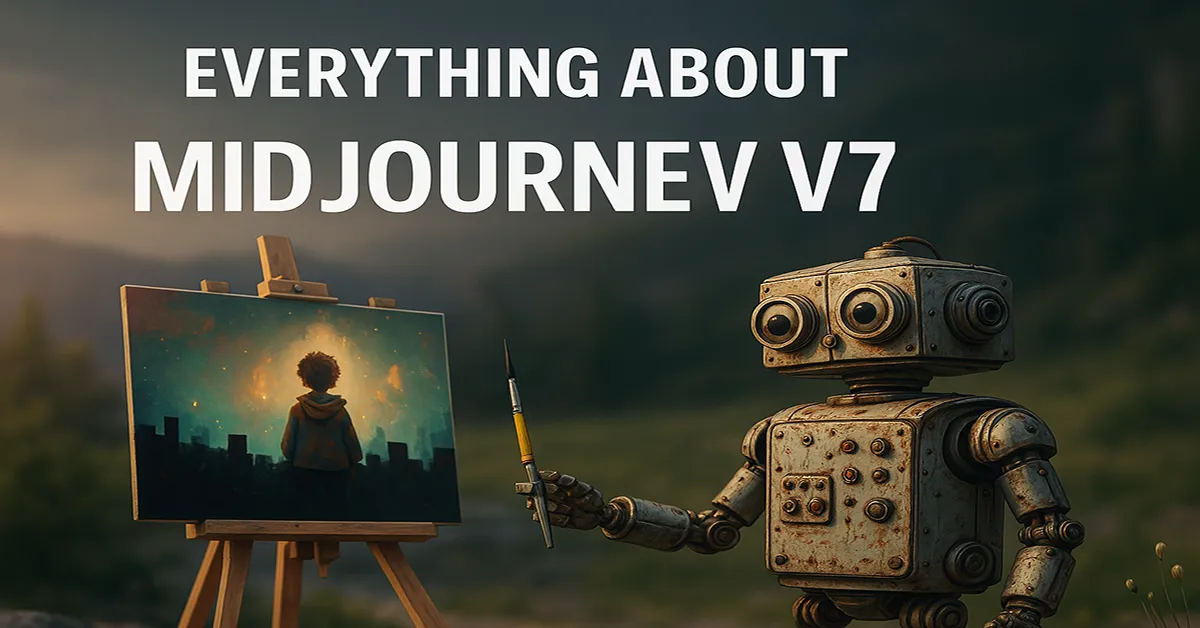- MMSearch-R1: The Future of AI with Active Image Search Unveiled
- Why MMSearch-R1 Is a Big Deal in the AI World
- How MMSearch-R1 Works: The Nuts and Bolts
- The Results: MMSearch-R1’s Winning Edge
- The Bigger Picture: What MMSearch-R1 Means for AI’s Future
- Challenges and Room to Grow
- Key Takeaways: What to Remember About MMSearch-R
MMSearch-R1: The Future of AI with Active Image Search Unveiled
What if AI could admit when it’s stumped and grab the exact info it needs to nail an answer? That’s not a sci-fi dream—it’s MMSearch-R1, a trailblazing system launched on April 6, 2025, by Mohammad Asjad and the team at xAI. Built on end-to-end reinforcement learning (RL), MMSearch-R1 equips Large Multimodal Models (LMMs) with active image search capabilities, revolutionizing visual question answering (VQA). This isn’t just a tweak to existing tech—it’s a seismic shift in how AI interacts with the world. In this deep dive, we’ll unpack its mechanics, marvel at its results, and ponder its game-changing potential. Buckle up—this is AI’s next big leap, and it’s packed with promise.
Why MMSearch-R1 Is a Big Deal in the AI World
AI’s come a long way, but it’s still got blind spots. LMMs—those brainy systems blending text and image smarts—shine when fed massive datasets, yet they stumble over niche, post-training, or restricted knowledge. Ever asked an AI about a rare artifact or a breaking news event and gotten a wild guess? That’s hallucination in action, and it’s a trust-killer. MMSearch-R1 steps up to the plate with a fix: it teaches models to recognize their limits and fetch visual data from the web when needed, all wrapped in a slick RL framework.
This matters more than ever in 2025. With AI powering everything from self-driving cars to virtual tutors, accuracy isn’t optional—it’s mandatory. MMSearch-R1’s knack for tapping real-time info could redefine reliability. And with Retrieval-Augmented Generation (RAG) already trending, this system’s seamless approach is turning heads among developers, researchers, and even casual tech fans. Let’s dig into what’s driving this buzz.
The Achilles’ Heel of Traditional LMMs
Picture this: you ask your AI assistant about a newly discovered species of fish. It’s post-training data, so the model’s clueless—and instead of saying “I don’t know,” it spins a yarn about a fictional fish with laser fins. That’s the problem with static knowledge bases. LMMs excel within their training scope but flounder beyond it, especially with long-tail info (think obscure facts) or domains locked behind privacy or copyright walls. MMSearch-R1 flips that script, giving AI a dynamic lifeline to the internet’s vast visual library.
The Rise of Active Search in AI
Active search isn’t new—think of RAG, where models pull external text to bolster answers. But MMSearch-R1 takes it further, focusing on images and integrating retrieval with generation in one fluid process. Unlike RAG’s clunky “retrieve-then-generate” setup, MMSearch-R1 decides if it needs to search, cutting latency and boosting efficiency. It’s like upgrading from a clunky flip phone to a sleek smartphone—same goal, way better execution.
How MMSearch-R1 Works: The Nuts and Bolts
So, how does MMSearch-R1 pull off this high-wire act? It’s a blend of cutting-edge RL, a tailor-made dataset, and a powerhouse architecture. Let’s pop the hood and take a closer look.
Reinforcement Learning: The Brain Behind the Operation
MMSearch-R1 leans on an end-to-end RL framework powered by the GRPO algorithm with multi-turn rollouts. Forget spoon-feeding data like supervised fine-tuning—RL is more like letting the model figure things out through trial and error. It learns to ask, “Do I know this, or should I look it up?” The reward system’s a gem: 0.9 × (Score – 0.1) + 0.1 × Format when searching, or 0.9 × Score + 0.1 × Format when not. This nudges the AI to prioritize accuracy without overusing tools, striking a balance that’s both smart and lean.
FactualVQA: The Dataset That Fuels It
No great model thrives without great data, and MMSearch-R1’s got the FactualVQA dataset in its corner. This isn’t some slapdash collection—it’s 50,000 visual concepts mined from MetaCLIP metadata, paired with images and factual Q&A crafted by GPT-4o. The team filtered and balanced it to mix familiar queries (like “What’s a dog?”) with head-scratchers (say, “What’s the pattern on a lesser-known moth?”). It’s a proving ground that pushes the model to flex both its internal smarts and external reach.
Active Image Search: The Secret Sauce
Here’s where MMSearch-R1 shines. It taps tools like SerpApi for web searches, JINA Reader for content extraction, and LLM-based summarization to process visual data. Imagine asking, “What’s the flag of a tiny island nation?” The model doesn’t guess—it hunts down the image, sifts through the noise, and delivers the goods. This isn’t blind grabbing; it’s selective synthesis, pulling only what’s needed to ace the answer. The veRL framework ties it all together, making the search-to-answer pipeline as smooth as butter.
The Results: MMSearch-R1’s Winning Edge
Numbers don’t lie, and MMSearch-R1’s got some jaw-dropping stats. Testing on the FactualVQA dataset and out-of-domain benchmarks like InfoSeek, MMSearch, and Gimmick shows it outpaces traditional LMMs by a mile. Accuracy? Check. Efficiency? Double check—it slashes training data needs by 50% compared to supervised fine-tuning, a boon in an era where compute power’s at a premium.
The model’s adaptability is the real kicker. It dials up searches for unfamiliar content and dials them down when it’s on home turf, avoiding wasteful lookups. In 2025, with AI’s carbon footprint under the microscope, this resource-conscious approach could set a new standard. Oh, and it’s not just lab candy—applied to models like Qwen2.5-VL-Instruct-3B/7B, it proves RL can squeeze more juice from less data.
The Bigger Picture: What MMSearch-R1 Means for AI’s Future
MMSearch-R1 isn’t a one-off—it’s a blueprint for what’s next. It’s paving the way for LMMs that don’t just sit on their laurels but actively chase knowledge. Picture an AI that tracks real-time events, from natural disasters to scientific breakthroughs, without missing a beat. Or one that reasons like a human, blending what it knows with what it can find.
The ripple effects could be massive. In healthcare, imagine diagnostics pulling the latest imaging research on the fly. In education, think of tutors that fetch up-to-date case studies for students. Even creative fields could get a boost—AI art tools referencing current design trends instantly. And with competitors like OpenAI’s o-series and DeepSeek-R1 in the mix, the race is on to build the ultimate knowledge-aware AI.
Challenges and Room to Grow
No tech’s perfect, and MMSearch-R1’s got its hurdles. Training RL models is tricky—tweak the rewards wrong, and you’ve got an AI that’s either too trigger-happy with searches or too stingy. Scaling it to handle massive, messy real-world datasets beyond FactualVQA could also trip it up. And let’s not forget latency—web searches take time, and in some use cases, every millisecond counts.
Still, these are growing pains, not dealbreakers. The foundation’s solid, and with more tweaks, MMSearch-R1 could iron out these kinks and go from prototype to powerhouse.
Key Takeaways: What to Remember About MMSearch-R
Let’s wrap this up with the highlights:
- Boundary-Breaking AI: It knows when to search, making it more reliable than static models.
- Lean and Mean: RL cuts data and compute needs, a win for efficiency buffs.
- Future-Ready: Active search sets the stage for dynamic, real-world-savvy systems.
- Versatile Impact: From healthcare to art, its potential spans industries.
Curious for more? Dive into xAI’s latest updates or skim the MMSearch-R1 research paper for the full scoop.
What’s your take—where should MMSearch-R1 head next? Drop your ideas below!






